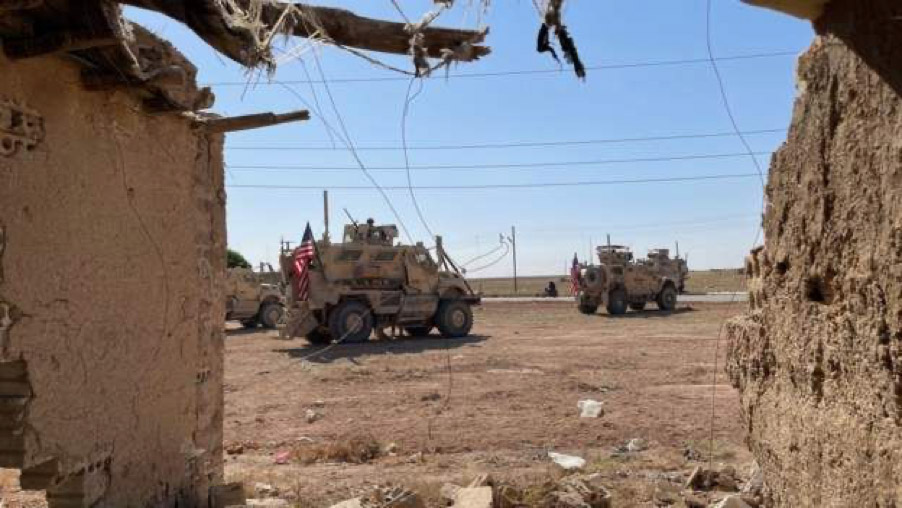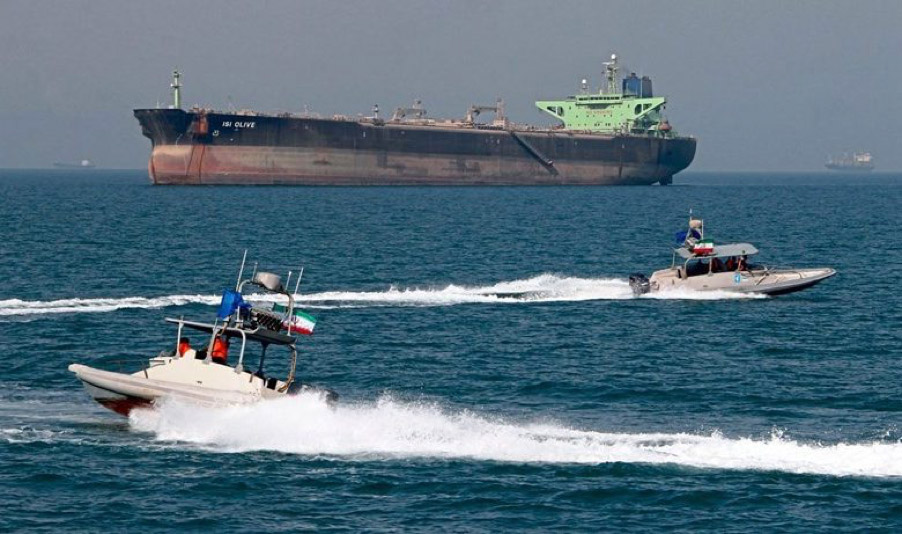Operating through their covert arm in the Iranian Revolutionary Guard Corps (IRGC), the Iranians are seeking too to preserve political, as well as geographical, distance — and an element of deniability — by acting via proxy forces. These may be semi-autonomous, but they depend on Iranian weaponry, and technical and intelligence support, and are subject to Iranian strategic direction. Exploitation of these non-state actors continues to pay dividends for Iran’s clerical regime. Their capacity to destabilise regimes and exert pressure on them helps Iran to neutralise threats in its regional periphery, gives it covert reach and secures its own borders, while its own anti-US and anti-Israel narrative wins Tehran friends and influence in the Islamic world and at home.
Risks of escalation
The Iranians are experienced and sophisticated players of the proxy game across the region, but one miscalculation could collapse the physical and political distance it has maintained and been exploiting. The drone attack this weekend on Tower 22 at the junction of Iraq, Syria and Jordan, seemingly launched by a Shi‘i proxy force from the Hizballah family, could be that miscalculation. It killed three members of the US military and caused traumatic injuries to many more.

The US operates a network of bases, including Tower 22, across the Middle East.
Washington will retaliate in its own time and way, raising the risk of a direct armed confrontation between Washington and Tehran. President Biden has committed publicly to “hold all those responsible to account at a time and in a manner of our choosing”, while also stating that “we do not need a wider war in the Middle East”. The US has long targeted militant groups in Yemen, Iraq and Syria, who have intensified their attacks on American assets in response to Washington’s support, however qualified, for Israeli actions in Gaza. The Biden Administration has so far avoided confronting Iran directly, but, under pressure at home and in an election year, the President cannot now afford to show weakness.
Biden is walking a tightrope. He must demonstrate effective, proportionate use of force to deter Iran, and a stance tough enough to impress geopolitical competitors, like China and Russia, which will be watching carefully and seeking to capitalise on any missteps. Yet he must avoid outright war with Iran. While the US’s Middle East allies fear Tehran and would like to see it taught a sharp lesson, the current situation in Gaza makes it impossible for them to associate themselves overtly with Washington in any regional conflict. That may apply too to some western allies. Geopolitics is not an area in which Biden has displayed a sure touch or cool judgment in the past, and the cacophony of US domestic politics makes it even harder for him to calibrate the right US riposte. That the spread of drone technology has raised the risks for US military assets is a factor he must also put in the balance.
The Straits of Hormuz
Either now or at a later point, the escalating conflict could arrive at Tehran’s doorstep, and at the Straits of Hormuz. So far, all the focus has been on the stretch of the Indian Ocean off south Yemen and the Red Sea. There, the Houthis’ actions have triggered a sharp decrease of marine traffic through the Bab al-Mandab Strait, throttling ship-borne trade from Asia through the Suez and into the Mediterranean and having a broader impact on the global oil price, supply chains and prospects for inflation in the west.

IRGC Navy fast boats operate near shipping in the Straits of Hormuz as part of Iran’s asymmetric naval defence approach.
Traditionally, it has been tensions at the entrance to the Gulf that have exercised governments, militaries, and the energy industry. For many years, under the Carter doctrine, the US Navy’s 5th Fleet, based in Bahrain and operating under US Central Command (CENTCOM), has patrolled international waters in the Gulf and secured shipping routes. This role is vital to the security of Arab allies in the region and to the continued flow of energy to global markets. A staggering 30 percent of the world’s seaborne-traded crude oil passes through the 25-mile gap at Hormuz every day, making it one of the world’s most strategically important chokepoints.
The Iranian government and the IRGC recognise that the capabilities of the US Navy are much more technologically advanced than their own but, as on land, Iran has adopted an asymmetrical approach. Small fast boats, missiles and unpredictable manoeuvres keep their adversaries on the alert. This “form of guerrilla warfare at sea”, as one expert termed it, is at the forefront of Iranian defensive doctrine in the Gulf. Swarming large vessels with small boats was a highly successful local tactic before the British started patrolling the Gulf in the early nineteenth century, and it is still effective. The IRGC Navy has shown itself prone to adventurism and there have been some awkward incidents in Gulf waters over the years that could have sparked outright war.
Tehran has historically threatened to close “the world’s most important chokepoint” in response to foreign pressure. At times of increased tension, Iranian boats have harried and harassed international shipping, with helicopters and drones joining the disruptive campaign against naval vessels and aircraft in the Gulf alike. Activities spiked as Iran’s nuclear programme came under increasing international scrutiny in the years following 2015, including the detention of ten US sailors, whose boats allegedly entered Iranian waters in January 2016. Although frictions continued to develop after the withdrawal of the US from the Joint Comprehensive Plan of Action (JCPOA) in 2018, the straits continued to function as normal, supported by a joint naval mission between European states to preserve free passage into the Gulf. Even since the attacks in Gaza in 2023, Iran has been careful not to cause too much disruption at the Straits themselves, although it has attacked and seized commercial tankers in the Gulf of Oman.
For many years, Iranian closure of the Hormuz was considered unlikely as Iran was as dependent as its neighbours on the straits being open to ensure its oil exports reached the international market. The clerical regime has, however, made a concerted effort to develop redundancy measures by diversifying its oil export routes and other infrastructure. The Kharg Island Oil Terminal, situated in the Gulf, has long been a key export point for Iranian oil, heightening Iran’s own reliance on Hormuz. The Goureh-Jask pipeline now takes oil past the Straits to a new refinery and terminal at Jask, located on the Gulf of Oman. The Iran-Iraq-Syria pipeline, also known as the “Friendship Pipeline”, offers an alternative route for Iranian oil to get to market, while Chabahar port, near the border with Pakistan and with direct access to the Indian Ocean, offers a crucial gateway for trade. Whether these redundancy measures would be effective, if Iran sought to allow only its own tankers through the Straits, remains to be seen, as the US would likely then blockade Iranian exports.

Security guards with their sniffer dogs patrol in front of a cargo ship during the inauguration ceremony of the newly built extension in the port of Chabahar on the Gulf of Oman, southeastern Iran, near the Pakistani border, Sunday, Dec. 3, 2017.
Disruption to the Straits of Hormuz is a different proposition from interference with passage at the Bab al-Mandab. It would have much more serious ramifications, both for global trade and Iran’s own regime. Asian customers of Gulf oil would turn on Tehran, alienating it still further from the international community. The effect of closure of the Straits on the global oil market would depend on: the extent of disruption; the actual and perceived length of disruption; the market tightness at time; the inclusion of the particular disruption in any risk premium in the price; the cause of disruption; the response from OPEC and associated producers (especially Saudi Arabia), and from International Energy Agency (IEA) member countries; and the type of crude affected.
We cannot rule out such disruption. A misstep by local commanders in the Gulf, whether US or Iranian, could ramp up tension and lead to progressive escalation. Alternatively, Iran’s own leaders, backed into a corner by an aggressive response from the US or by domestic pressure, might take unilateral action in a counsel of desperation. Much rides on how the US responds to this latest attack and how it flexes its muscles and influence in the region, as the cycle of conflict in the Middle East continues.
Key facts
- Iran has world’s third largest proven reserves of 158 billion barrels (12% of proven global oil reserves).
- Crude oil production in 2023 was on average 3.4 mbd (capacity is about 3.7 mbd). In September 2023, it exported 1.5 mbd. The main export destinations are China (91%), Syria (3%) and Venezuela (2%). Domestic consumption is growing (now c. 1.8 mbd).
- About 30% of global seaborne traded oil goes through the Straits of Hormuz every day.
- Iran’s main gas field, South Pars, is in mid-Gulf and 16 of 104 producing oil fields lie offshore.
- Crude exports earned Iran $42.6 billion in 2022, 42.5% of government revenues.
